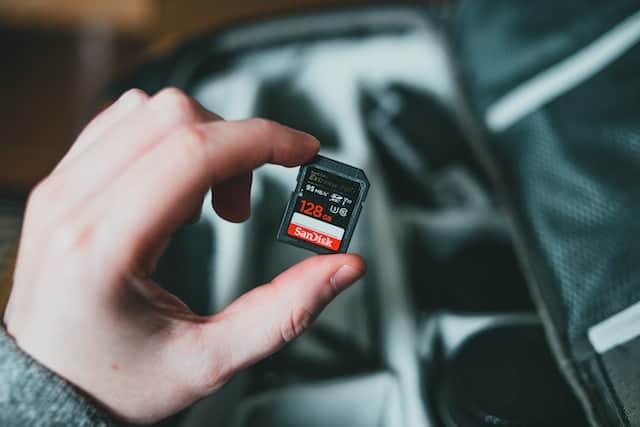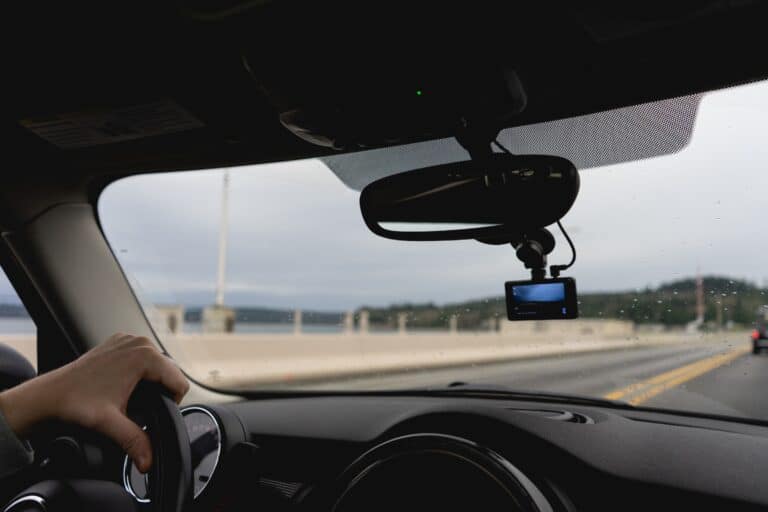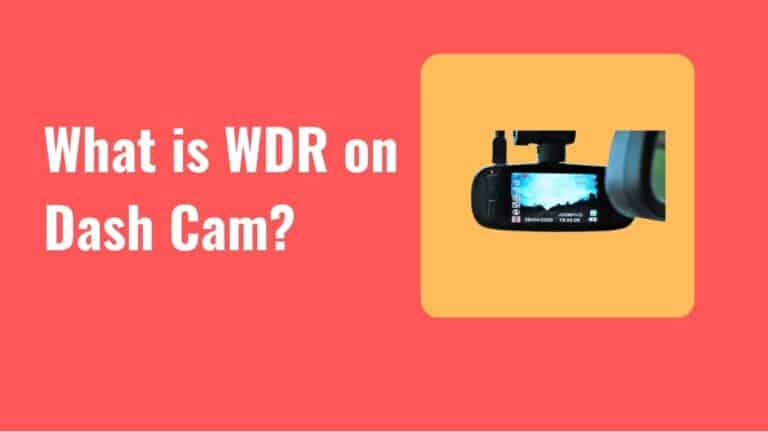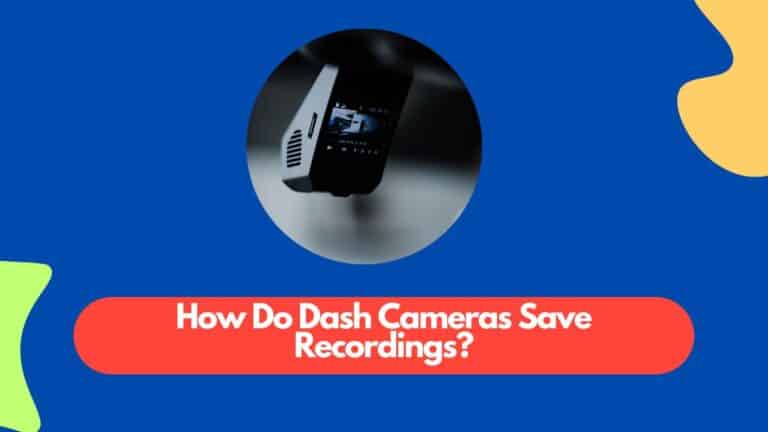How To Send Dashcam Footage By Email?
Dashcam footage can be a valuable asset when it comes to documenting accidents or capturing unexpected moments on the road.
Whether you want to share it with insurance companies, law enforcement, or simply store it for future reference, knowing how to send dashcam footage by email is essential. In this article, we will guide you through the process of saving your dashcam footage to your computer, compressing it for email, attaching it to an email, and writing a clear and concise message.
We will also provide tips on how to send the footage safely and securely, ensuring that it reaches its intended recipient without any issues. So, if you’re ready to master the art of sharing dashcam footage, let’s dive right in.
Sending dashcam footage by email may seem daunting at first, but with the right know-how, it can be a straightforward process.
The first step is to save the footage from your dashcam to your computer. Once you have done that, you will need to compress the video files to make them suitable for email attachments.
We will walk you through the steps of using video compression software to reduce the file size without compromising the quality of your footage.
Next, we will show you how to attach compressed video files to an email and provide tips on writing a clear and concise message to accompany the footage.
Lastly, we will discuss the importance of sending dashcam footage safely and securely, including tips on password protection and encryption. So, if you’re eager to share your dashcam adventures or important incidents, keep reading to learn how to do it efficiently and effectively.
Saving Dashcam Footage to Your Computer
Now that you have captured that incredible dashcam footage, it is time to save it to your computer and relive those heart-pounding moments over and over again!
The first step is to connect your dashcam to your computer using a USB cable. Once connected, your computer should recognize the dashcam as a removable storage device. Open the File Explorer on your computer and locate the dashcam folder.
From here, you can select the footage you want to save and copy it to a location on your computer’s hard drive.
After copying the footage to your computer, it is essential to organize and label the files appropriately. Create a new folder specifically for your dashcam footage, and give it a descriptive name. You can further categorize the footage by creating subfolders for different events or locations.
Read Also: How Do Dash Cameras Save Recordings? 2 Methods Explained
This will make it easier to find and access specific footage later on. Additionally, consider renaming the individual files with dates or brief descriptions to provide more context.
Once you have saved and organized your dashcam footage on your computer, you can now proceed to the next step of sending it by email or sharing it with others.
Compressing Dashcam Footage for Email
To make it easier to share your dashcam recordings, you can compress the video files before sending them via email. Compressing the footage not only reduces the file size, but also ensures that the recipient can easily download and view the video without any issues.
One way to compress dashcam footage is by using video compression software or online tools like VEED.
These tools allow you to adjust the video settings, such as resolution, bitrate, and frame rate, to reduce the file size without significantly affecting the video quality. It is important to strike a balance between file size and video quality to ensure that the footage remains clear and easily understandable.
Another method to compress dashcam footage is by converting the video files to a different format. Certain video formats, such as MP4 and H.264, offer better compression capabilities than others. By converting the footage to one of these formats, you can further reduce the file size without compromising on the video quality.
Additionally, you can also consider trimming unnecessary parts of the video to further reduce the file size. Removing any irrelevant footage or moments of inactivity can significantly reduce the file size and make it quicker to upload and download.
Overall, compressing dashcam footage before sending it via email not only makes the process smoother but also ensures that the recipient can easily access and view the videos without any difficulties.
Attaching Dashcam Footage to an Email
Attaching your dashcam videos to an email is a breeze when you follow these simple steps. First, open your email client and compose a new email. Look for the attachment button, usually represented by a paperclip icon, and click on it.
A file explorer window will open, allowing you to navigate to the location where your dashcam footage is saved. Select the video file you want to attach and click on the “Open”button. Depending on the size of the video, it may take a few moments for it to be attached to the email.
Once attached, you will see the video file listed in the email composition window.
It is important to note that some email clients may have limitations on the size of attachments you can send. If your dashcam footage is too large to attach directly to the email, you can consider compressing it using a video compression tool or converting it to a smaller file format.
This will reduce the file size and make it easier to attach and send. Additionally, if you are sending multiple videos, it is recommended to compress them into a single zip file before attaching it to the email. This will not only make the process quicker but also ensure that all the videos are grouped together and organized for the recipient.
By following these steps, you can easily attach your dashcam footage to an email and share it with others.
Writing a Clear and Concise Email Message
Crafting a concise and engaging message will ensure that your email captures the recipient’s attention and effectively conveys your message.
When writing an email to send dashcam footage, it is important to be clear and to the point. Start by providing a brief introduction, stating the purpose of the email and why you are sending the footage. Be sure to include any relevant details, such as the date, time, and location of the incident captured on the dashcam.
In the body of the email, use bullet points or numbered lists to outline the key points you want to convey. This helps to break up the text and makes it easier for the recipient to read and understand. Keep your sentences short and concise, avoiding unnecessary jargon or technical terms. Use simple and straightforward language that is easy to understand.
Also, consider including a brief conclusion that summarizes the main points and any action steps that need to be taken. Remember, the goal is to make it as easy as possible for the recipient to review the footage and take appropriate action if necessary.
By following these guidelines, you can ensure that your email is clear, concise, and effective in conveying your message.
Sending Dashcam Footage Safely and Securely
Make sure you securely share the video captured on your dashcam to ensure its safety and protect your privacy. When sending dashcam footage by email, it is important to consider the file size and format.
Dashcam videos can be quite large, so it is recommended to compress the file before sending it. There are various software and online tools available that can help you compress the video without compromising its quality.
Additionally, make sure to choose a secure email service provider that uses encryption to protect your data during transmission. This will ensure that only the intended recipient can access the footage and that it cannot be intercepted or tampered with by unauthorized individuals.
In addition to compressing the file and using a secure email service, it is also a good practice to password protect the video before sending it.
This adds an extra layer of security and ensures that even if the email account is compromised, the footage remains protected. When setting a password, make sure to use a strong and unique combination of characters, numbers, and symbols.
Finally, it is important to inform the recipient about the password separately, either through a phone call or a separate email. This will prevent the password from being intercepted along with the video file.
By following these precautions, you can securely send dashcam footage by email, ensuring its safety and protecting your privacy. Taking these steps will give you peace of mind knowing that your footage is only accessible to the intended recipient and that it remains confidential throughout the transmission process.
Frequently Asked Questions
How do I adjust the resolution of my dashcam footage before saving it to my computer?
To adjust the resolution of your dashcam footage before saving it to your computer, you can usually do so through the settings menu on the dashcam itself. Look for options related to resolution or video quality and make the desired adjustments.
Can I send dashcam footage by email if the file size exceeds the email attachment limit?
No, if the file size of the dashcam footage exceeds the email attachment limit, you won’t be able to send it via email. You may need to compress the file or use a file-sharing service instead.
What are some recommended video editing software programs for compressing dashcam footage?
Some recommended video editing software programs for compressing dashcam footage are Adobe Premiere Pro, Final Cut Pro, and Handbrake. These programs allow you to reduce the file size without compromising the quality of the footage.
Are there any specific file formats that are incompatible with email attachments?
There are specific file formats that may be incompatible with email attachments, such as .exe or .bat files. It is important to check the file format before sending it via email to ensure compatibility.
What precautions should I take to ensure the recipient can view the attached dashcam footage without any technical issues?
To ensure the recipient can view the attached dashcam footage without technical issues, make sure to compress the video file, use a compatible file format like MP4, and include detailed instructions on how to open the file.
Conclusion
In conclusion, sending dashcam footage by email can be a straightforward process if you follow the right steps. First, make sure to save the footage from your dashcam to your computer.
This can usually be done by connecting your dashcam to your computer using a USB cable and transferring the files. Next, compress the footage to reduce its file size, as large video files can be difficult to send via email. There are various software programs available that can help you compress the footage without compromising its quality.
Once the footage is compressed, you can attach it to an email. Make sure to use a reputable email service provider and follow any specific instructions they have for attaching large files.
Finally, when writing the email message, be clear and concise. Provide any necessary context or information about the footage and explain why you are sending it. It is also important to ensure the email is sent safely and securely. Consider using a secure email service or encrypting the attachment to protect the privacy of the footage.
By following these steps, you can easily send dashcam footage by email. Whether you are sharing it with insurance companies, law enforcement, or simply storing it for your own records, sending dashcam footage electronically can be a convenient and efficient way to handle and share important information. Just remember to save, compress, attach, and write a clear email message to ensure a smooth and secure transfer of the footage.






